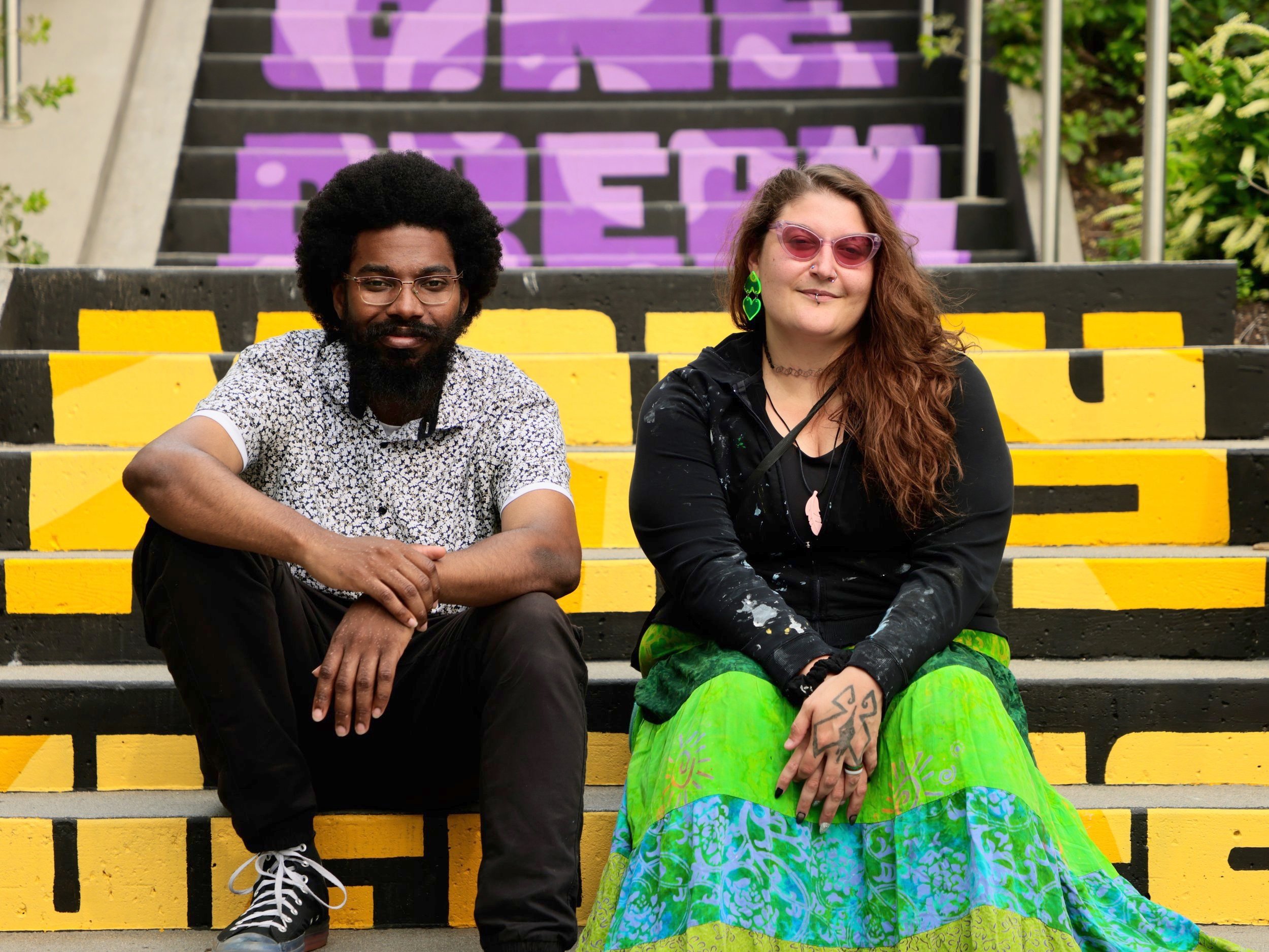
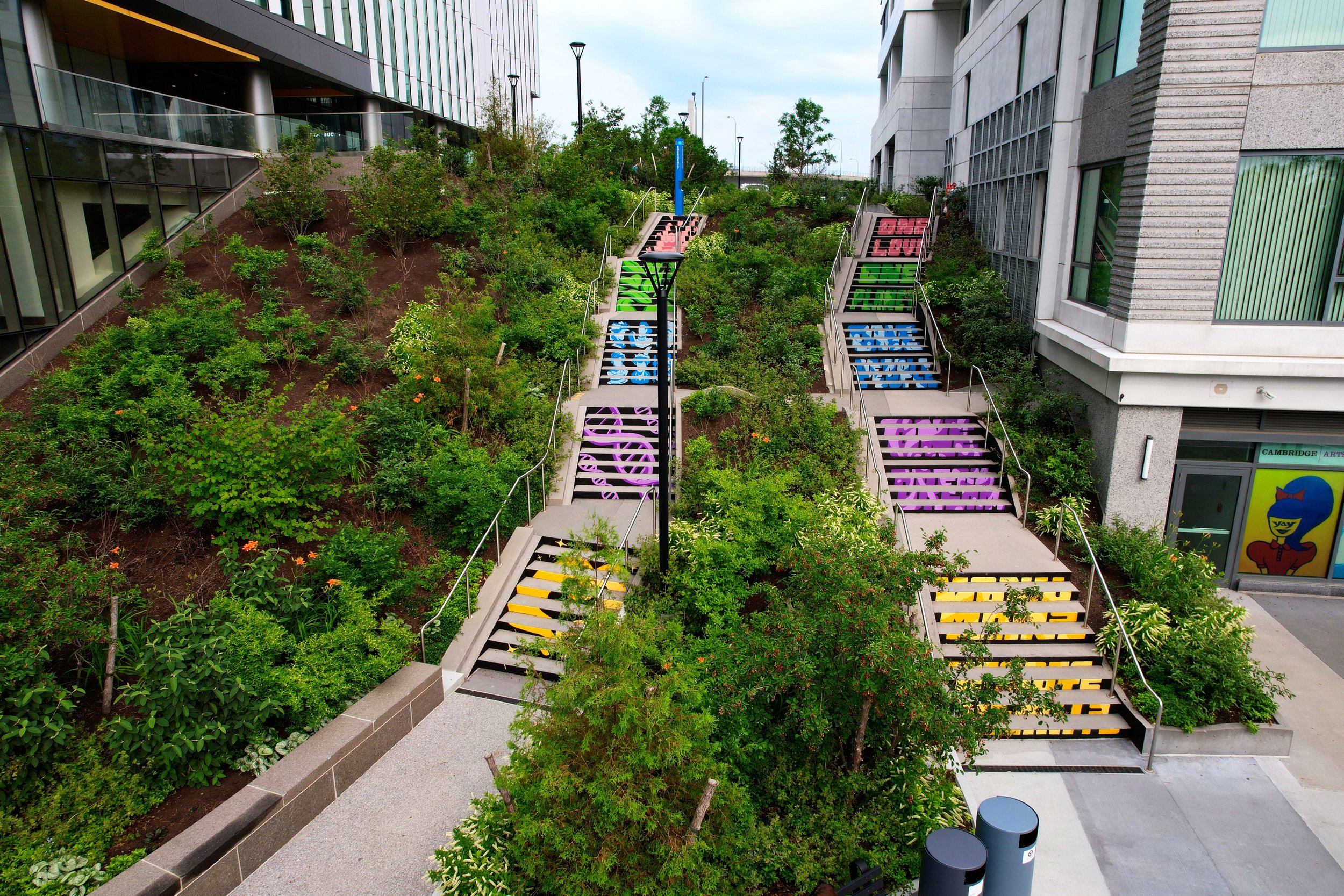
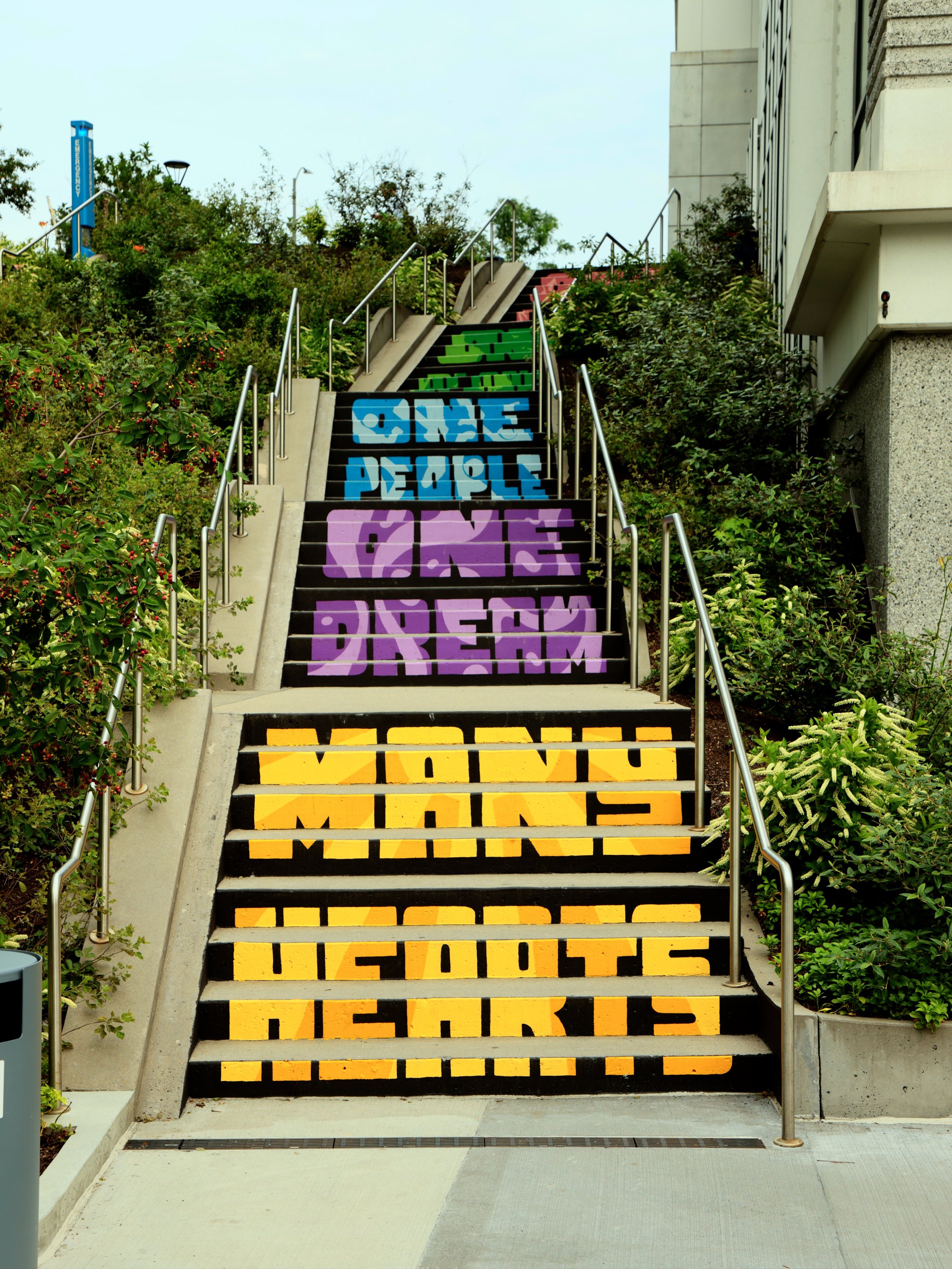
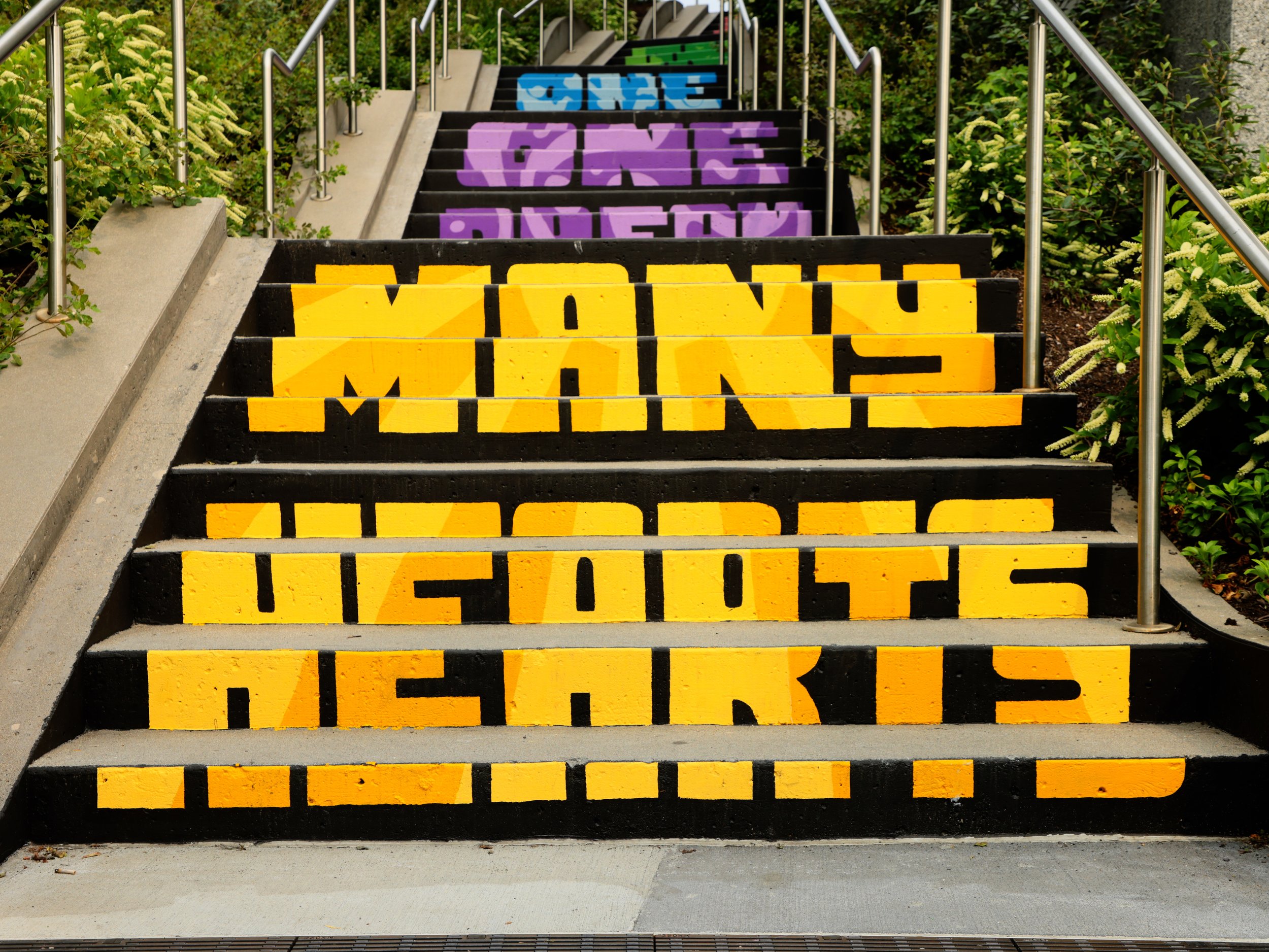
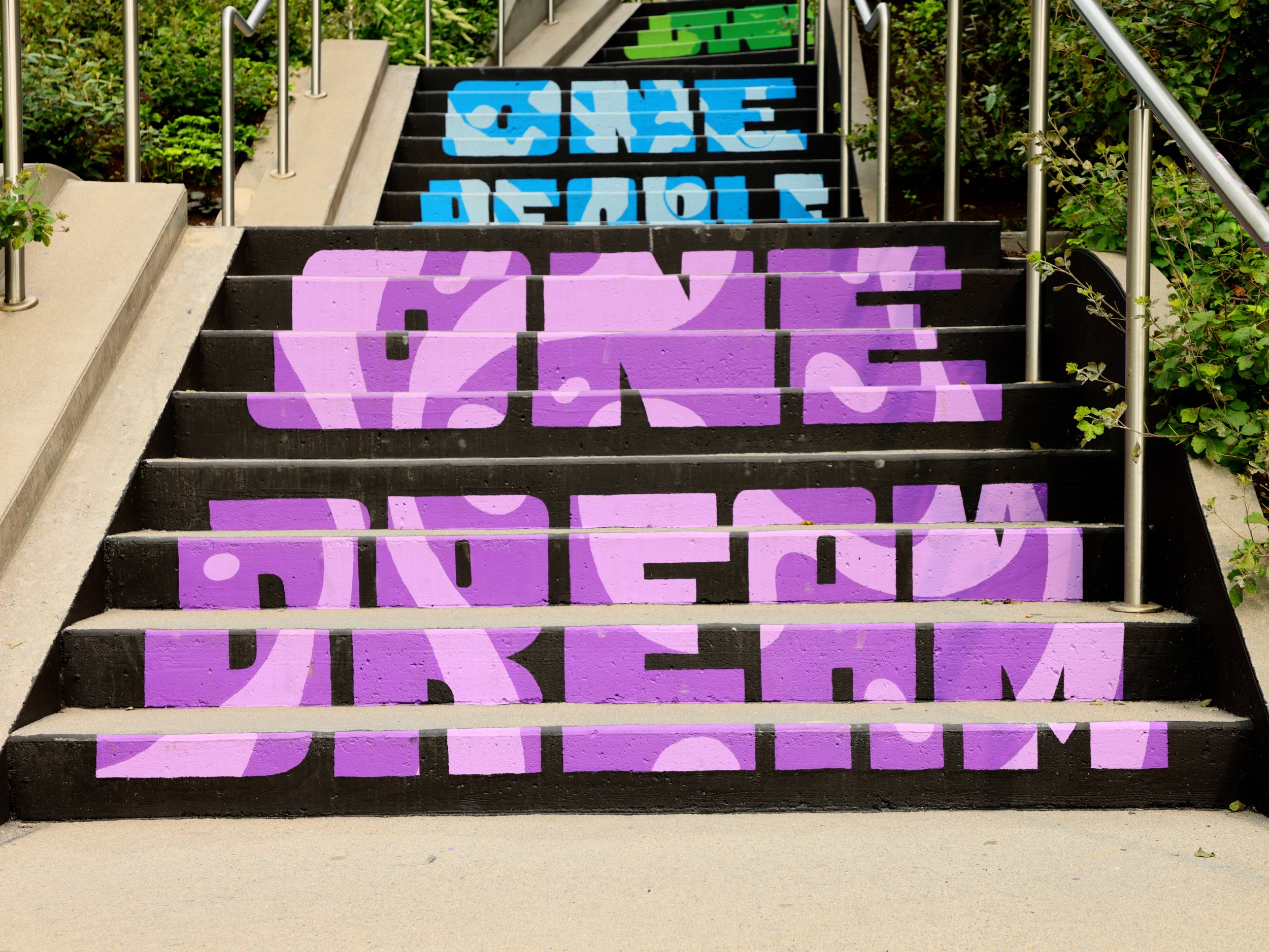
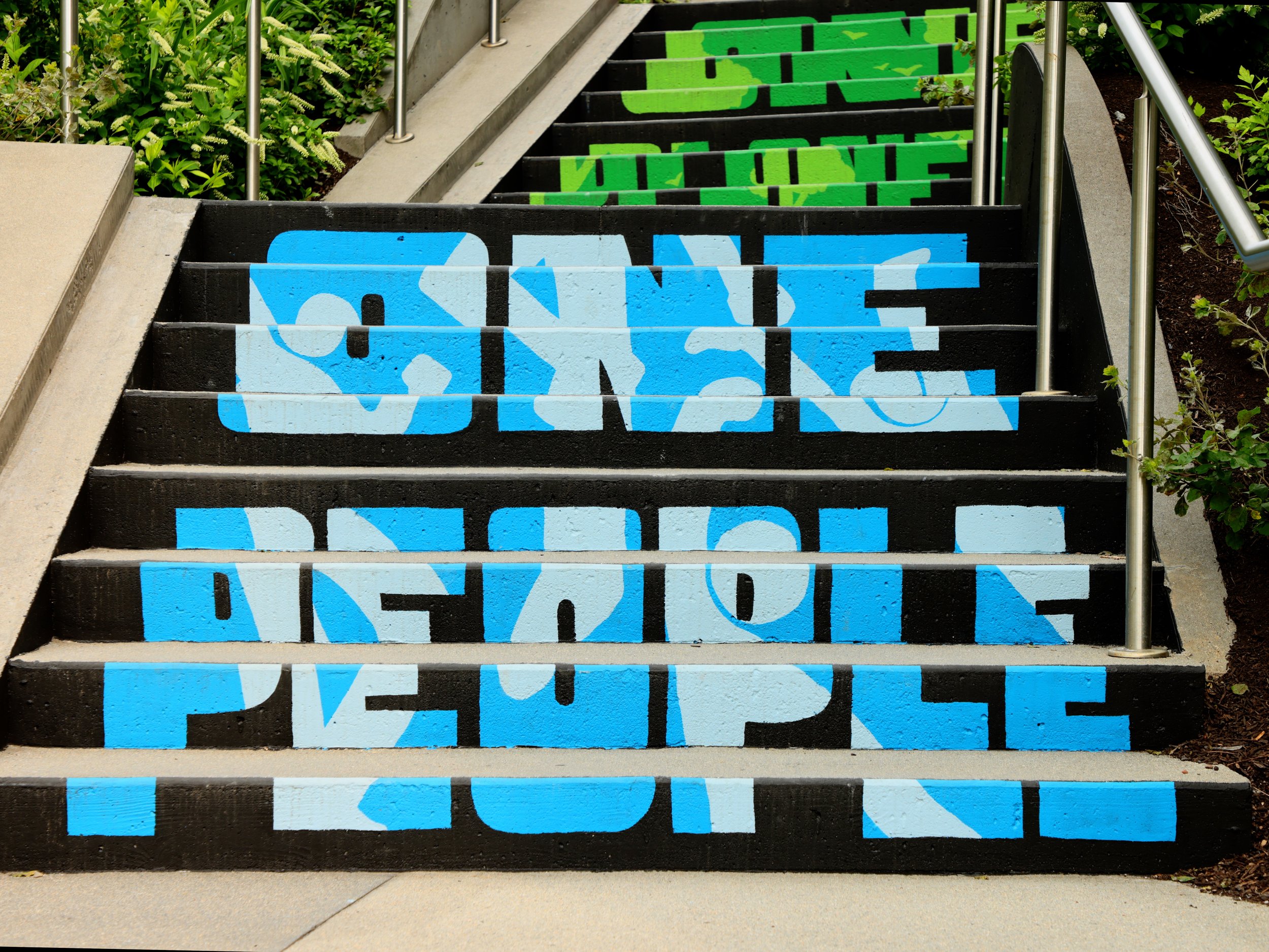
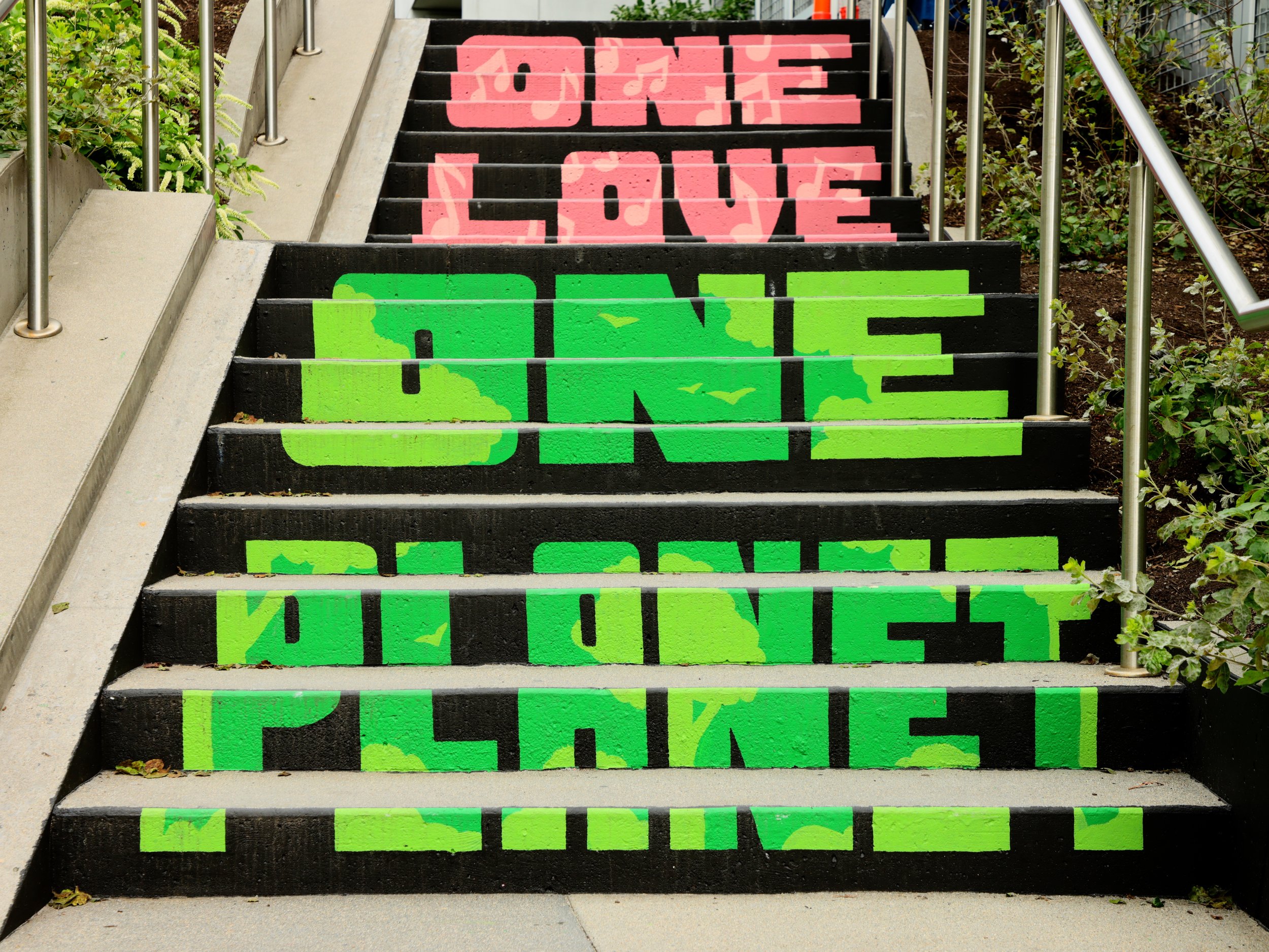
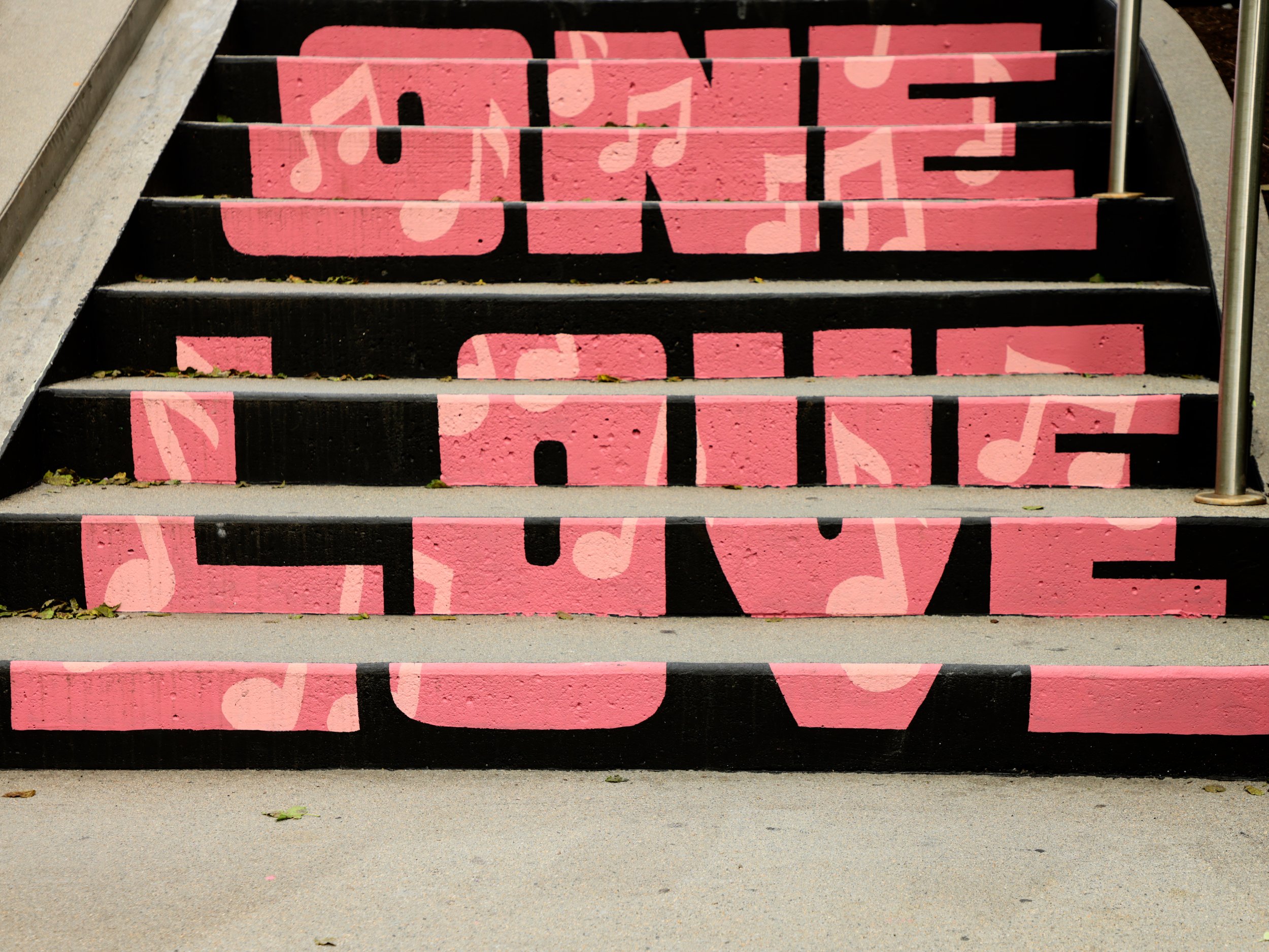
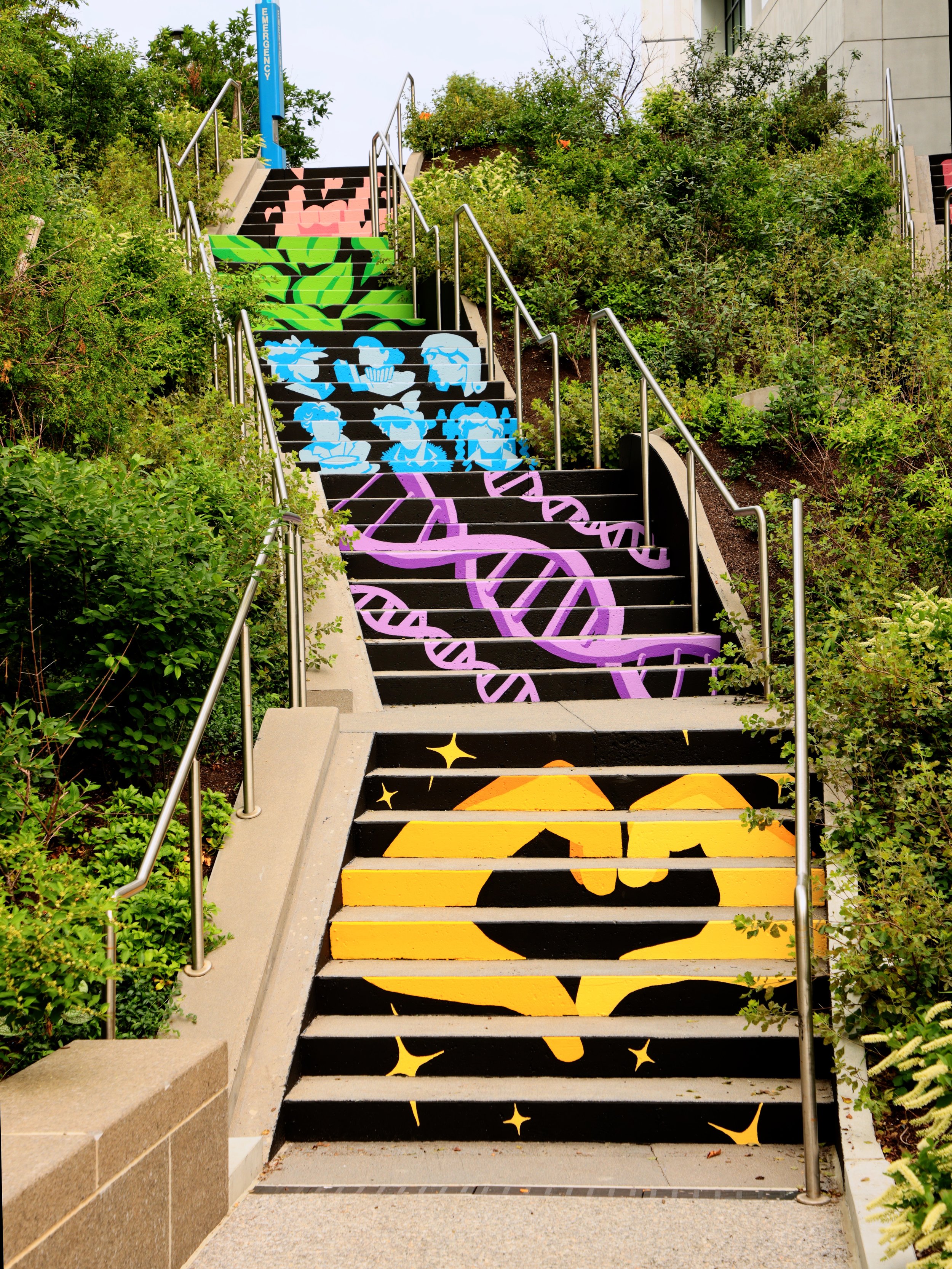

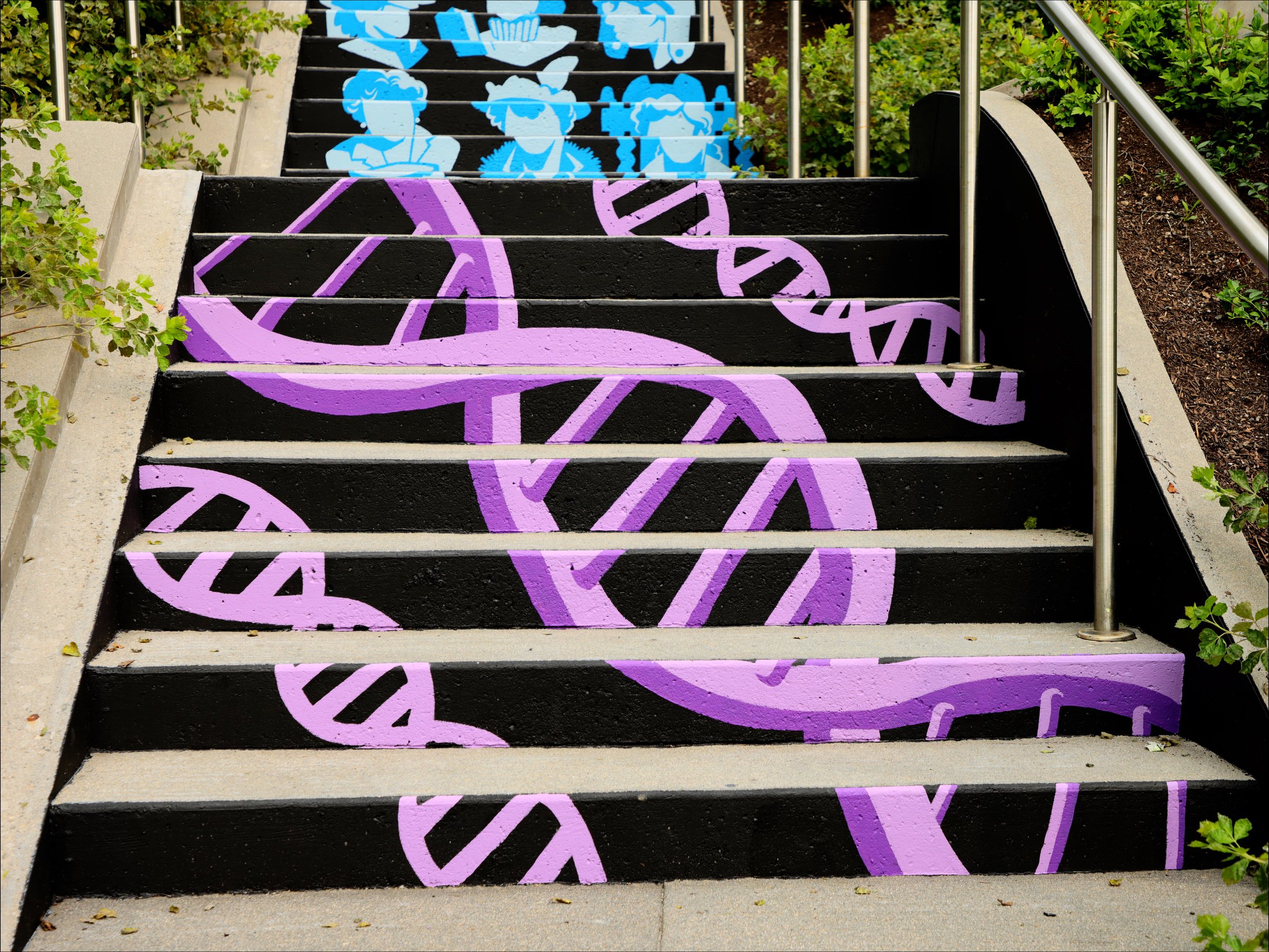
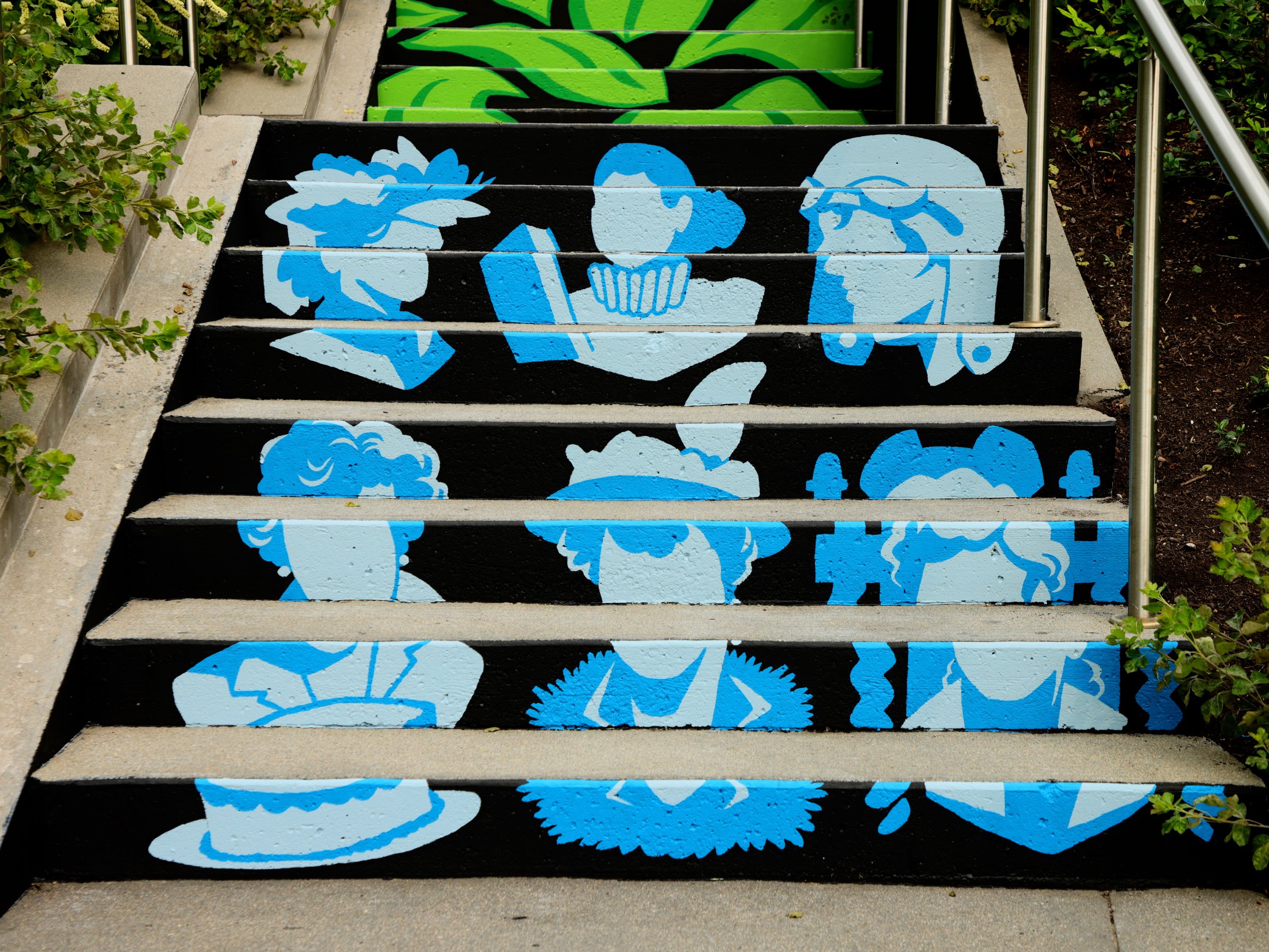
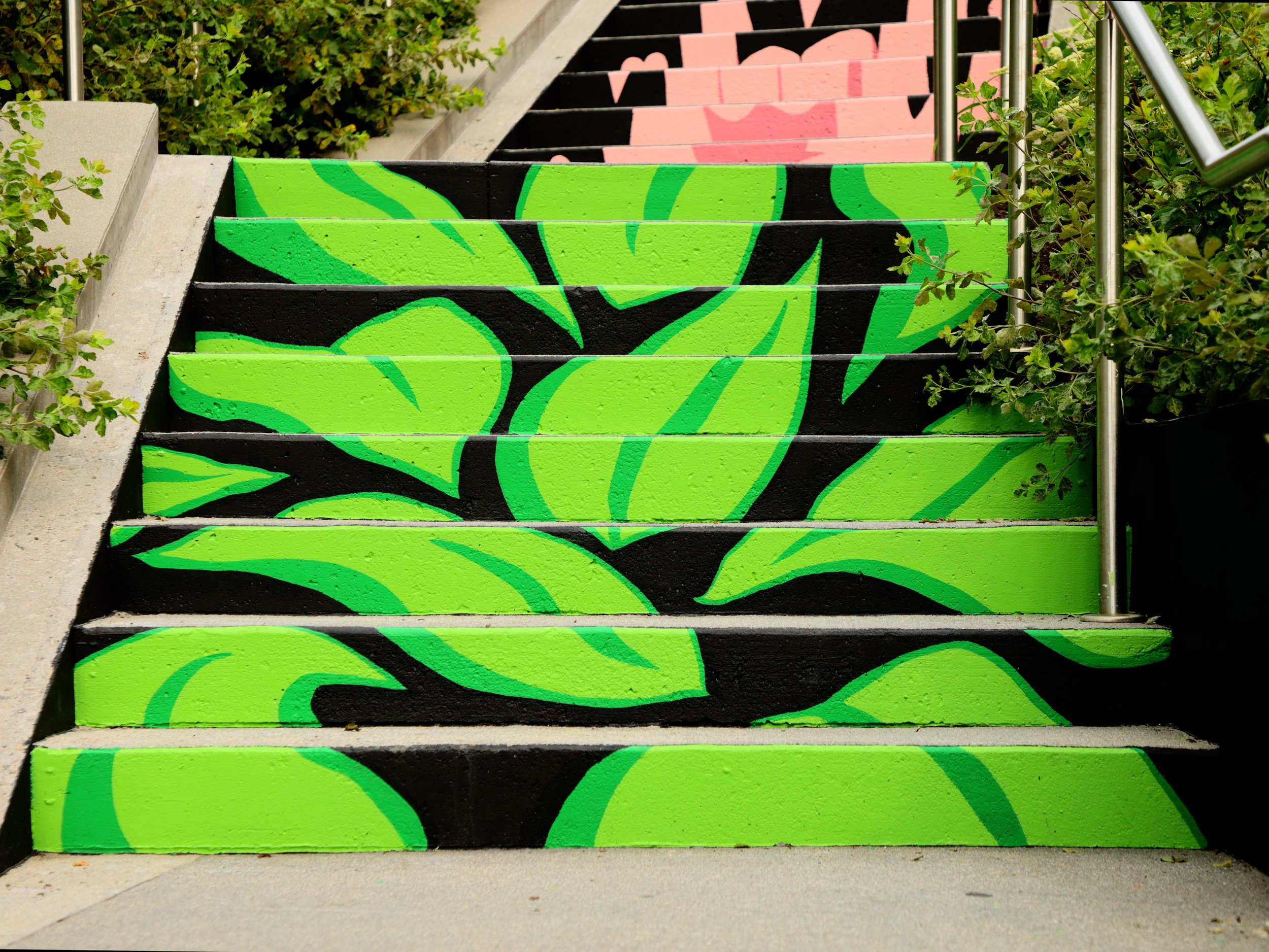
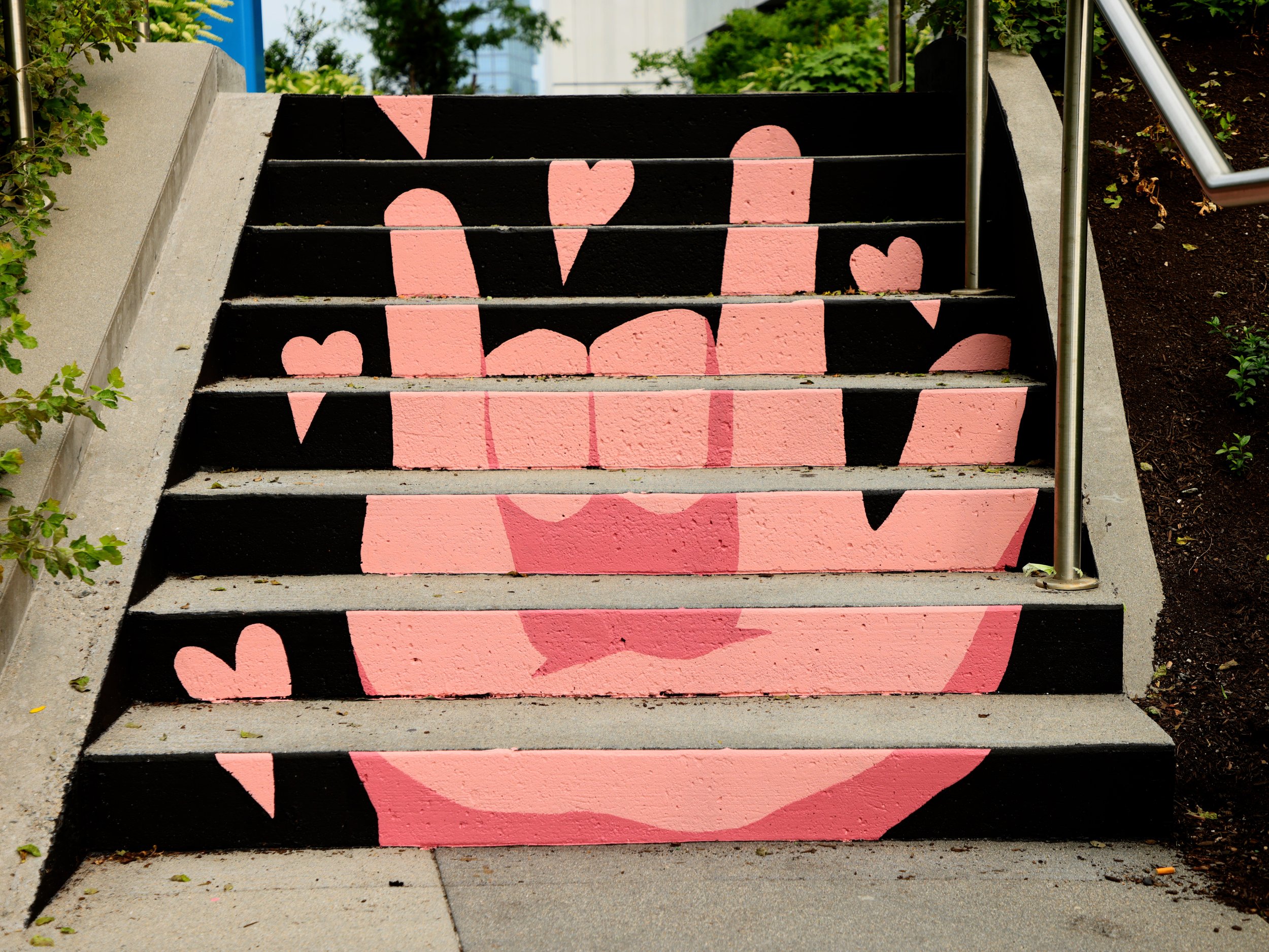
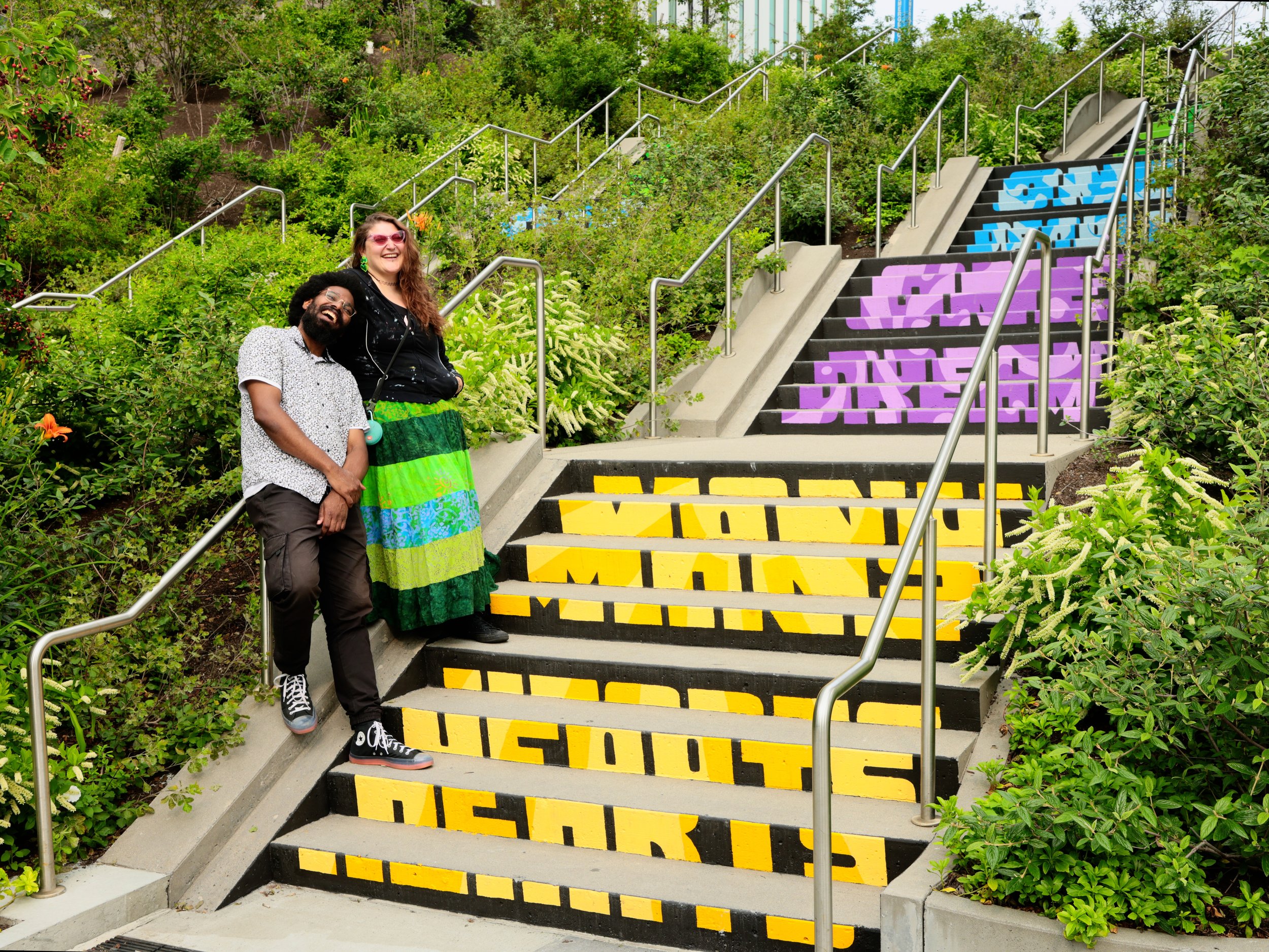
Over a series of working sessions held February through March 2023, Michael Talbot and Phoebe Warner led the development of the concept for the Murphy Staircase mural with a group of teens from the Community Art Center in Cambridge, MA. By exploring the teen’s visual and written responses to questions probing notions of community, Talbot and Warner developed a composition that directly incorporates their collaborators’ points of view.
Commissioned by DivcoWest and Cambridge Crossing and titled “Collective Ascension,” the mural celebrates people as the foundation of community through two compositions juxtaposed, each rendered with an amalgamation of bold colors and compelling visual forms that radiate against black backdrops. When examined conjointly, the compositions enter into generative dialogue and parse the celebratory theme by pairing evocative phrases on the right staircase with corresponding figurative panels on the left. To complement the right-hand words accentuating oneness and diversity, each of the left side panels depicts familiar symbols of love, nature, people, innovation, and music that encapsulate the distinct elements at the core of community. As visitors ascend and descend the staircases, they will take their place amidst these building blocks, and be visually reminded that they, too, form an integral part of the collective.
Originally from Jamaica, Michael Talbot is a freelance artist living and working in Boston, MA. He received his BFA from Lesley University in Illustration and Graphic Design and is especially motivated by art’s ability to connect and inspire. In his practice, Talbot embarks on a quest to spread the joy that embraces his passion for storytelling.
Phoebe Warner is a Boston-based interdisciplinary artist. They graduated from Montserrat College of Art in 2015. Warner’s creative output draws from nature and adventure, and their passion for exploring new territories extends beyond the canvas and into the great outdoors. They believe in the power of art to stimulate our minds, tell stories, and commemorate, and cultivate culture.
art_works caught up with Talbot and Warner to reflect on the collaborative process.
art_works: Have you ever worked together before, and if so, how did this public art project differ from past collaborations?
Michael Talbot: We have indeed! We initially met through the summer program at Artists For Humanity (AFH) as Paint Studio Mentors, and since then, we have collaborated on a number of showcases, exhibitions, and murals outside of AFH. However, this has been the first project for which we have both been co-creators.
Phoebe Warner: Michael and I have worked together on so many different projects! We challenge each other collaboratively and regularly share our ideas for projects. We have worked together on and off, starting at AFH back in 2015. Since meeting, we have had several art shows together and worked side by side on murals. Most of this work has been on our own individual projects, so it has been exciting to be able to co-create and combine both of our visions into one piece.
a_w: Tell us more about the idea behind this community-driven mural. What themes are you addressing, and what message do you hope to convey to the community that uses these staircases every day?
MT: The main theme that we wanted to convey with this mural was the importance of a cohesive community working together as one unit, while simultaneously acknowledging that it is, in fact, made up of many individuals who come together as one.
PW: I hope the community that uses these staircases is inspired to look again at the world around them. I hope they notice the little things and details that make up their environment. I hope the mural makes them stop and smile and talk to their neighbors. I hope it brings them joy and pushes them to use the stairs daily.
a_w: Throughout this process, you juggled the dual roles of working as artists completing a client commission, as well as project leaders and teen mentors with Community Art Center (CAC). How did you ensure that all parties’ stylistic contributions were included in the end result, and in what ways did the teen’s contributions influence your own ideas and artistic styles?
MT: I would say that we have definitely had practice and experience working in this facet during our time at AFH. With a project as large as this one, and with as many contributors involved, getting the ideas was not the hard part. The trickier task was to consolidate them into fewer, more directed concepts based on the most common overlaps. Throughout the process, we did our best to only respond to and work off of ideas and sketches that were initially done by the teens from CAC—that way, our main input as project leaders was simply to make everything cohesive through color and art style.
PW: Our multi-tasking brains have been well-honed by our past experiences as mentors at AFH. However, every project bears its own distinct challenges because variables are susceptible to change. The group we led from CAC took time to get to know one other and learn how everyone worked, so that we could be flexible and conscientious about the decisions we made regarding the design, as well as the execution of the mural itself. The site-specificity also played a huge role, and we had to do a lot of walking up and down the stairs to check in on everyone’s progress. By being mindful and observant of our own process, we were able to also be mindful and observant when it came to the team’s contributions, and could thereby help everyone play to their strengths.
a_w: During your concept development sessions with CAC, what prompts did you use to engage the teens, and what did you discuss?
MT: During our brainstorming session, we initially began by asking them what came to mind when they thought of the word “neighborhood” or “community.” We wanted them to think about how they would describe their neighborhood, and what an ideal neighborhood might look like to them. The purpose of this exercise was not necessarily to obtain finalized ideas, but rather loose and broader concepts or overarching categories that could allow for free-form idea generation. We wrote down all of the words that came to mind, whether directly related or otherwise, and once we had come up with an extensive list, we hosted a collage session in which the teens could create their own pieces using found images and text from magazine and book clippings to further represent these thoughts in visual form. After that, we moved on to directly sketching out ideas onto a staircase template that we prepared for them. Throughout these sessions, we also presented our own work and artistic practice as an example of the range of what community work and collaboration might look like, in the hopes of assisting them in thinking of new and different ways to approach the task at hand.
PW: For our last session, we also prompted the teens to take what they learned from our design sessions and apply it to their own practices. We gave them a prompt to draw themselves with a superpower.
Learn more about the creative process behind Collective Ascension (2023) by watching the video below!
Video crediting: Michael Talbot & Phoebe Warner, Collective Ascension, 2023. Site-specific mural. Brian P. Murphy Memorial Staircase, Cambridge, MA. Project executed in collaboration with Community Art Center and facilitated by art_works for DivcoWest. © Michael Talbot & Phoebe Warner. Videography courtesy of Casey Preston, WhiteBirch Media.
